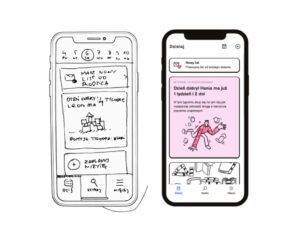Summer of Startups is an accelerator program. It wrapped up with a demo day and the announcement of the winner of this year’s startup batch. Some of those startups were done with their first MVP, some were still working on it. All of them, however, could benefit from the same lesson. Test the market, gather data, and improve the product or service you have so that it meets the demands of a market. An MVP, or a minimum viable product, is part of a strategy to see if your product has the potential to enter a market gap. Let’s talk about the following steps: changes and pivoting. This is where things can get tricky.

An MVP should be out ASAP! You’ve probably realized this by now. As soon as you have something that takes you forward, it should be out of the garage. A sentiment I’ve heard again at the Summer of Startups in Helsinki was that a car without tires and engine just won’t take you anywhere. Some like to call the next step the MBP – maximum buyable product. How do you achieve that? Market iteration, aka “pivoting”. Pivoting is probably the favorite word of a startup entrepreneur. It’s used so often it almost seems a cliché, nevertheless, it’s essential to repeat what lies behind it.
What now?
Normally, an startup entrepreneur is regarded as a stubborn person with a big vision. In reality, a successful entrepreneur finds that the extreme uncertainty of a new product usually requires many course re-directions, or pivoting. Pivots come in different sizes and flavors, but in the end it’s about continuous innovation.
Take the Finnish flagship Nokia as an example. Nokia has gone through several pivots since its founding date in 1865. First, it started as a paper mill. Then, it was a rubber manufacturer. Then an electronics and telecommunications devices manufacturer. Eventually, Nokia launched their first mobile phone in 1992.
Ultimately, all pivoting should lead to the MBP. A MBP needs to get the startup the position that keeps it in the lead and provides maximum potential opportunity. So what’s your paper mill? And what will it require to turn it into your “most sold mobile phone in the world”?
Aim for the stars, but deliver in small steps. Here are couple of steps to follow: figure out & fix!
- Figure out whether product/service is easy to understand. It’s not? Back to the garage and fix it.
Basically, a potential customer needs to know what the company is doing after a few first sentences (or in this case the first MVP). Start short, so that the potential customer can immediately grasp the idea. Take Facebook. When it still was ‘The Facebook’ the basic idea was to connect people in college. FactoryFinder from Summer of Startups had a simple idea with an already demoed service, somehow similar to The Facebook. It was just “connect factories with designers”. Simple and clear, eh?
- Figure out if the product/service is easy to try out. It’s not? Back to the garage and fix it.
Will your product/service offer a free trial or demo after the first MVP? Netflix gives you one free month. Spotify has a free version with commercials in between songs, and a premium version that gives you no commercials and more features. It’s best to implement this after the first MVP in order to gather as much market data as possible.
- Figure out if the product/service is easy to purchase. Not easy right now? Back to the garage and fix it.
Make the purchase decision journey easy. Fortunately, Google Play and App Store have made this easy through the in-app-purchases process, in case of a mobile application. Is it an improved product or service of an old one? Will it be easy to replace? How quickly will the customer get the service or product working and actually make a purchase decision? Lääkärihinta.fi, who also participated in the accelerator program, offers a map-based comparison portal of public and private health care services. Through their portal, it’s easy to get access to the health care services. It’s easy to use, easy to find, and easy to purchase.
When it comes to pivoting and changes, software is much easier to deal with than hardware. With a car, you basically need to start all the way from the beginning if something is wrong with the first MVP. Software requires some adjustments in order to get back to the correct path again. Software is moldable on the go. Most products are tangled up in complexity and filled with features that nobody uses. The iterative approach is really a way of being lean, as well finding the simplest and – in the end – the cheapest way to solve the customer’s problem. It’s all about fixing things, isn’t it?
The accelerator program is there to give the startup a kickstart. After a summer packed with coaching and drilling, those young entrepreneurs now must fend for themselves. With a little help from their customers.
Zapisz
Zapisz




